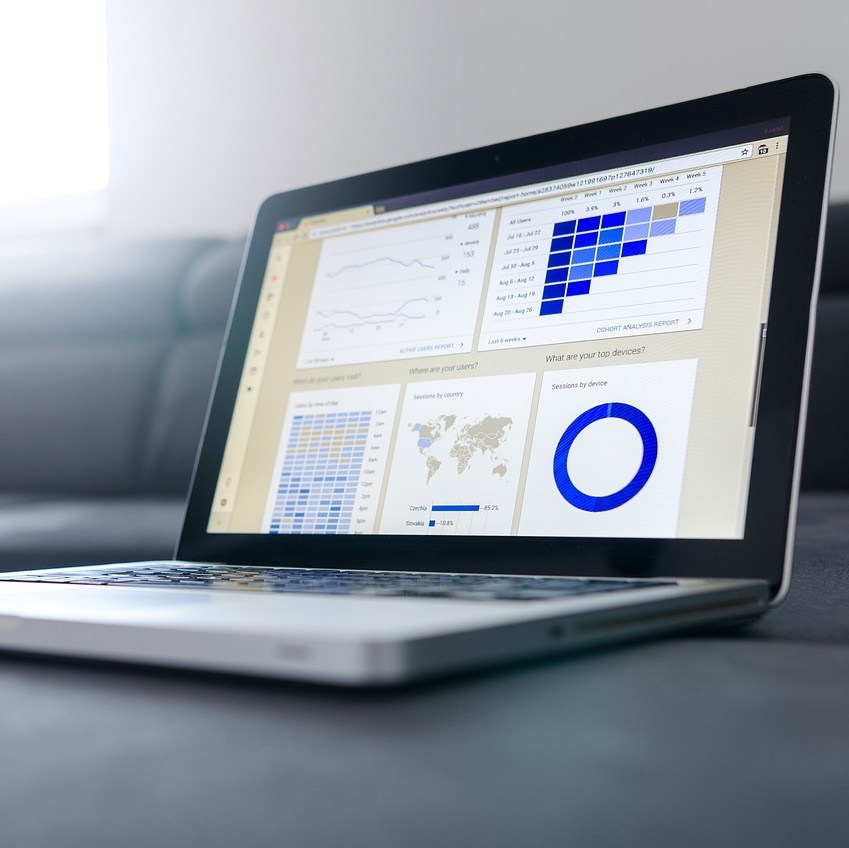Welcome to the world of cryptocurrency trading—a realm where digital assets fluctuate in value with the promise of lucrative returns for those who understand the game. If you’re new to this space, fear not. The journey to mastering crypto trading and potentially making profits is an exciting one, and I’m here to guide you through it step by step.
Let’s begin with the key takeaways, which will provide you with a snapshot of what you need to know to get started:
Key Takeaways
- Understand the basics of cryptocurrency and blockchain technology to lay a solid foundation for trading.
- Choose a reliable trading platform that aligns with your goals and provides the necessary security for your investments.
- Develop a trading strategy that suits your risk tolerance and investment style, whether it’s day trading or long-term holding.
- Implement risk management techniques, such as setting stop-loss orders, to protect your capital from significant losses.
- Stay informed and continuously educate yourself on the latest trends and strategies in the crypto market.
Unlock the Potential of Crypto Trading
Cryptocurrency trading can be a thrilling endeavor, but it’s crucial to approach it with a clear head and a solid strategy. The potential for profit is significant, but so is the risk of loss. It’s a market that never sleeps, with prices changing around the clock, driven by a global community of traders.
Quick Guide to Starting in Crypto
To get started, you’ll need to create an account on a cryptocurrency exchange. This is where you’ll buy, sell, and monitor your digital assets. Look for exchanges with robust security measures, user-friendly interfaces, and a wide selection of coins. Remember, not all exchanges are created equal, so do your homework before committing.
Once you’ve set up your account, it’s time to fund it. Most exchanges allow you to deposit fiat money (like USD, EUR, or GBP) using various payment methods, including bank transfers and credit cards. Now you’re ready to make your first trade—but don’t rush. Start small, learn the ropes, and gradually increase your exposure as you gain confidence.
Primary Advantages of Trading Cryptocurrency
Trading cryptocurrency comes with a unique set of advantages:
- Accessibility: The crypto market is open 24/7, allowing you to trade at any time that suits you.
- Liquidity: With a growing number of participants, the market has become increasingly liquid, making it easier to enter and exit positions.
- Volatility: While risky, the high volatility of crypto can lead to significant profits if trades are managed correctly.
Remember, with these advantages also come challenges, such as the potential for hacking and fraud. Always prioritize security and due diligence.
Fundamentals of Crypto and Blockchain
Before diving into trading, it’s essential to understand the fundamentals of what you’re dealing with. Cryptocurrencies are digital or virtual tokens that use cryptography for security and operate on a technology called blockchain.
Demystifying Cryptocurrencies
Cryptocurrencies are more than just digital money. They represent a new way of thinking about finance and the transfer of value. Each cryptocurrency operates on its own underlying technology and has its unique value proposition. Bitcoin, for example, is seen as digital gold, while Ethereum facilitates smart contracts and decentralized applications.
Understanding Blockchain Technology
At the heart of cryptocurrency is blockchain technology—a decentralized ledger that records all transactions across a network of computers. This technology ensures security and transparency, as all transactions are publicly recorded and immutable. Understanding blockchain is key to comprehending the intrinsic value of cryptocurrencies.
With these basics in hand, you’re better equipped to make informed trading decisions. In the next part of this article, we’ll delve into setting up your first trade, developing a trading strategy, and managing your risks effectively. Stay tuned for more insights that will help you navigate the crypto market with confidence.
Now that you’re equipped with the basics of cryptocurrency and blockchain, let’s dive into the next critical step: choosing the right trading platform. This is where you’ll spend most of your time analyzing trends, executing trades, and managing your portfolio.
Choosing the Right Trading Platform
There are many factors to consider when selecting a platform for trading cryptocurrencies. You want to look for:
- User-friendliness: A platform that is intuitive and easy to navigate.
- Security: Strong security measures to protect your funds, such as two-factor authentication and cold storage options.
- Asset variety: A wide range of cryptocurrencies to trade, giving you more opportunities to diversify.
- Fees: Transparent fee structures with no hidden costs.
- Customer support: A responsive support team that can assist you with any issues.
Take the time to explore different platforms, read reviews, and perhaps even test them out with small transactions before fully committing.
Secure Your Investment: Wallets 101
Once you’ve chosen a platform, you’ll need to secure your investment. Cryptocurrency wallets come in two main types: hot wallets and cold wallets. Hot wallets are connected to the internet and are convenient for frequent trading, but they’re also more vulnerable to attacks. Cold wallets, on the other hand, store your crypto offline and are considered much more secure.
It’s generally recommended to use a combination of both: a hot wallet for trading and a cold wallet for long-term storage of your assets.
Developing a Trading Strategy
With your trading platform set up and your investment secured, it’s time to develop a trading strategy. This will be your roadmap to making informed decisions and potentially profiting in the crypto market.
Day Trading versus Long-Term Holding
There are two main approaches to trading crypto:
- Day trading: This involves making multiple trades within a single day to take advantage of short-term market movements. It requires a lot of time, attention, and understanding of market trends.
- Long-term holding: Also known as ‘HODLing’, this strategy involves buying and holding cryptocurrencies for an extended period, betting on their long-term increase in value.
Your choice between day trading and long-term holding should align with your investment goals, time commitment, and risk tolerance.
Technical Analysis for Practical Profits
Technical analysis is a method of predicting the future price movements of a cryptocurrency based on historical patterns and market statistics. It involves analyzing charts and using various indicators to identify trends. Some popular indicators include moving averages, RSI (Relative Strength Index), and Bollinger Bands. While no method can guarantee profits, technical analysis is a valuable tool for making educated guesses about market behavior.
Risk Management Essentials
No matter how much you study the market, there will always be risks involved in trading. That’s why risk management is crucial.
Why You Can’t Ignore Risk Management
Effective risk management ensures that you don’t lose more money than you can afford. It’s about making calculated decisions and protecting your investments from the inherent volatility of the crypto market.
Setting up Stop-Loss Orders Correctly
One of the most effective risk management tools is the stop-loss order. This is an order placed with a broker to buy or sell once the asset reaches a certain price. A stop-loss is designed to limit an investor’s loss on a security position. Setting it up correctly can be the difference between a minor setback and a catastrophic loss.
Practical Tips for Crypto Newcomers
As you embark on your crypto trading journey, here are some practical tips to keep in mind:
Do’s and Don’ts for Crypto Enthusiasts
- Do: Start small and only invest what you can afford to lose.
- Don’t: Chase losses or believe in ‘sure things’—there are no guarantees in crypto trading.
- Do: Continuously educate yourself and stay up-to-date with market news.
- Don’t: Make impulsive decisions based on hype or fear of missing out.
Resources and Communities for Learners
Becoming a part of the crypto community and accessing resources can significantly enhance your learning. Join forums like Reddit’s r/cryptocurrency, follow thought leaders on Twitter, and use educational platforms like Binance Academy or Coinbase Learn to expand your knowledge.
The Road to Profitable Trading
Profitable trading doesn’t happen overnight. It requires discipline, patience, and a willingness to learn from mistakes. Remember to review your strategies, record your trades, and understand what works for you and what doesn’t.
By following these steps, staying informed, and managing your risks, you’ll be well on your way to becoming a savvy crypto trader. Keep an eye out for the final part of this series, where we’ll answer frequently asked questions and provide additional insights to help you succeed in the crypto market.
Adapting to market volatility is a skill that every crypto trader needs to cultivate. Volatility can be your best friend or your worst enemy; it all depends on how you handle it. To adapt, you need to stay calm, think clearly, and have a plan in place for when the market takes a sudden turn. And remember, volatility often presents opportunities, so keep a lookout for those moments when you can buy low or sell high based on your strategy.
Frequently Asked Questions (FAQ)
As we wrap up this guide on cryptocurrency trading for beginners, let’s address some common questions that you might have as you start your trading journey.
What Is the Safest Way for a Beginner to Buy Cryptocurrency?
The safest way for a beginner to buy cryptocurrency is through a reputable exchange that prioritizes security and user-friendliness. Look for platforms with strong track records, positive user reviews, and comprehensive customer support. Always enable all available security features, such as two-factor authentication, and consider transferring your crypto to a secure wallet that you control, especially if you’re planning to hold long-term.
Can I Start Trading with a Small Amount of Money?
Absolutely, you can start trading with a small amount of money. Many exchanges allow you to buy fractions of cryptocurrencies, so you don’t need to invest thousands of dollars to get started. Begin with an amount you’re comfortable with and that you can afford to lose, and use it as an opportunity to learn about the market dynamics without taking on too much risk.
What Should I Do If I Experience a Significant Loss?
If you experience a significant loss, it’s important to not let emotions drive your decisions. Take a step back, assess what went wrong, and understand whether it was due to factors within your control or unforeseen market movements. Use this as a learning experience to improve your strategy and risk management techniques moving forward.
How Can I Stay Updated on Cryptocurrency News?
To stay updated on cryptocurrency news, follow reputable news sources, join online forums, and engage with the community on social media platforms like Twitter and Reddit. Additionally, many exchanges and crypto analytics platforms offer news updates and insights that can help you stay informed about the latest developments in the market.
Is It Necessary to Understand Blockchain to Trade Crypto?
While it’s not strictly necessary to understand blockchain technology to trade crypto, having a basic knowledge can certainly help. Understanding the fundamentals can provide you with a deeper insight into the potential value and use cases of different cryptocurrencies, which can inform your trading decisions.





Leave a Reply